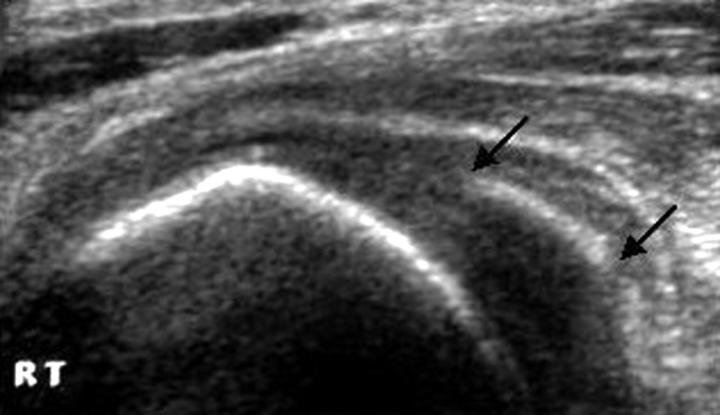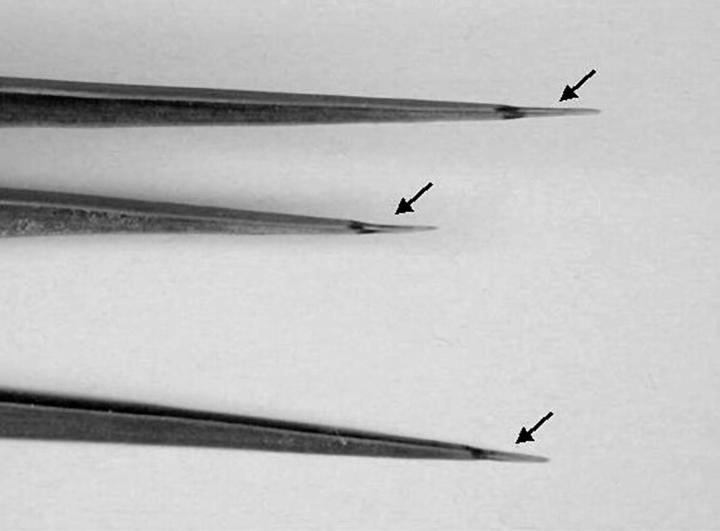Abstract
A review of the literature between 1953 and 2002 revealed that bacterial growth after plant thorn injuries is reported infrequently. Yet when reported, Pantoea agglomearns is the most common organism found. Therefore, it must be considered and suspected in "aseptic" cases of arthritis, when there is a history of a plant thorn injury. We also emphasise the efficacy of ultrasound examination in these cases to identify the presence and location of a plant thorn.
Full Text
The Full Text of this article is available as a PDF (118.4 KB).
Figure 1.
A foreign body with approximate length of 8 mm (the date palm thorn) is seen in the posterior lateral aspect of the knee (between the black arrows).
Figure 2.

The date palm (Phoenix dactylifera).
Figure 3.
The thorn tip of the date palm (0.5–1.5 cm) (black arrows).




